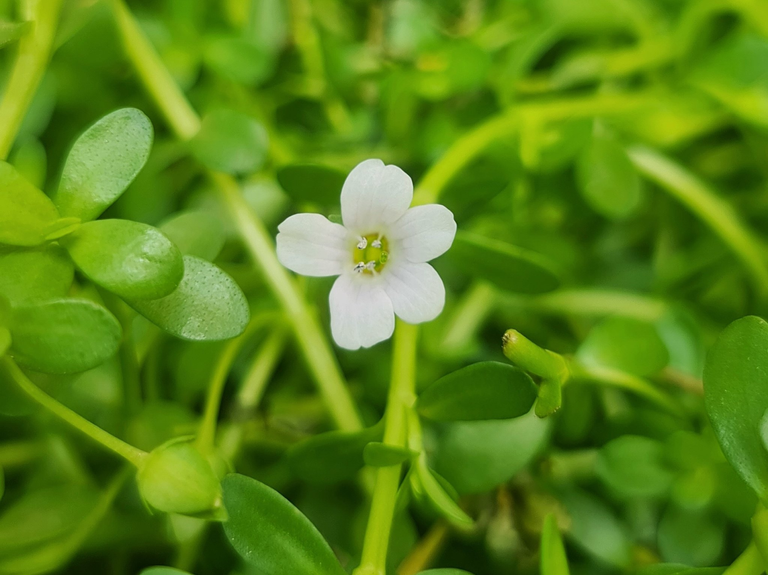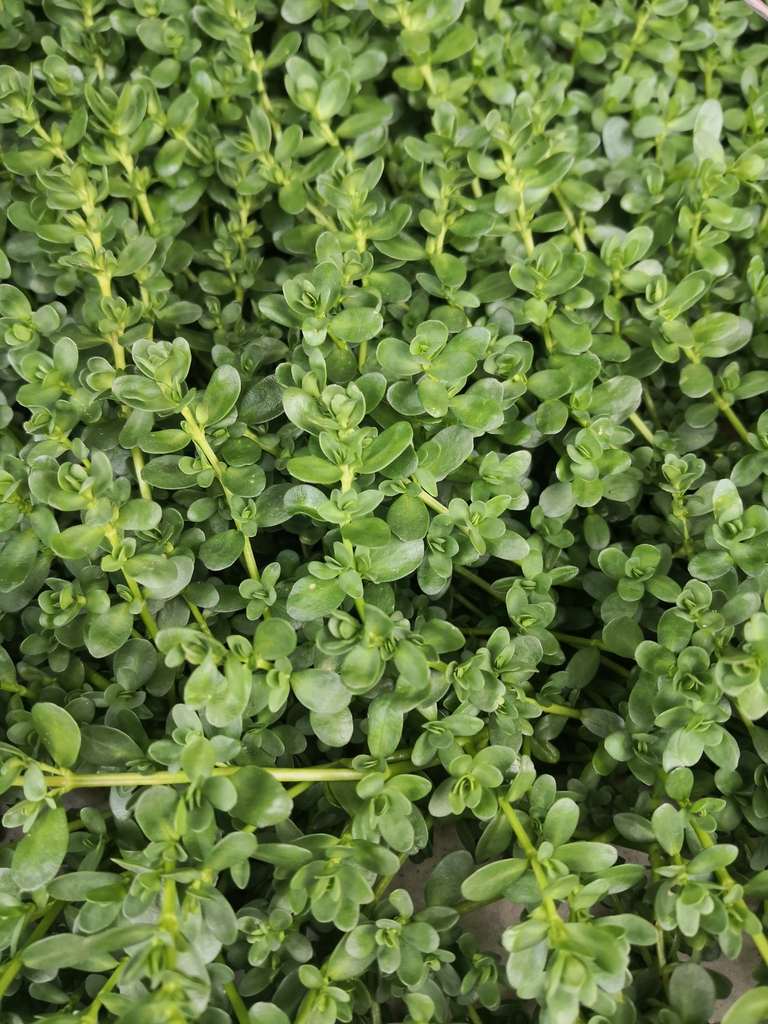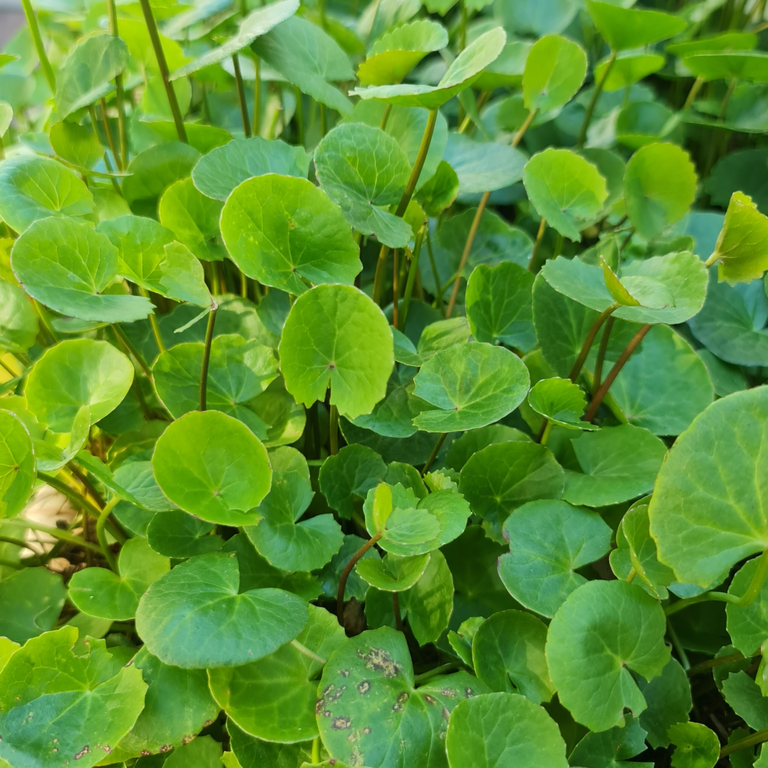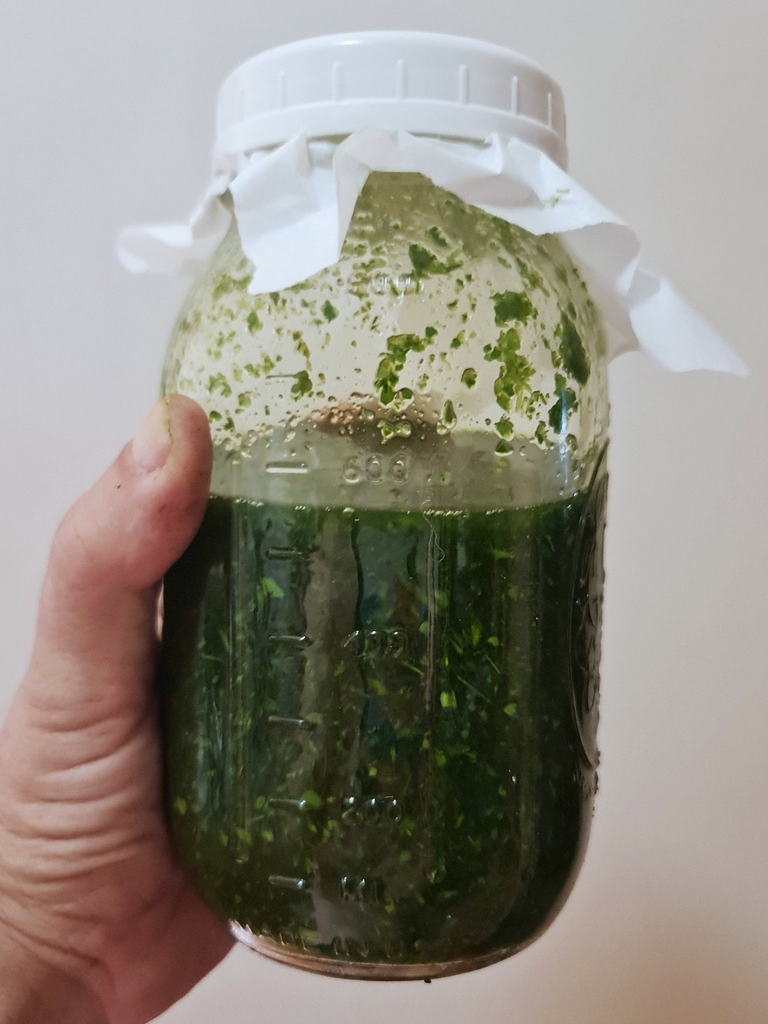
Brahmi (Bacopa monnieri)
Common names: Brahmi, Water Hyssop, Indian Pennywort, Memory Herb, Pa-chi-t’ien, Ulasimang-aso
Taxonomic name: Bacopa monnieri
Family: Plantaginaceae (Scrophulariaceae)
Related herbs: other Bacopa sp. which aren’t medicinal
Area of origin: India, Indochina, Australia, and Sri Lanka
Parts used: whole plant
Can be used for: mental clarity, memory, mental tiredness (brain fag), anxiety, epilepsy, convulsions, energy boost, calming, supporting meditation, headaches due to overworking the brain, exhaustion, dementia, Alzheimer’s, nervous breakdown, addiction/withdrawal, muscular tension (especially head, neck and shoulders), constipation
Organs/Systems: heart, stomach, liver
Meridians: heart, stomach, liver, conception vessel
Actions: adaptogen, nervine, bitter, tonic, cardiac tonic, nootropic, clears wind and heat, analgesic (extract), spasmolytic, anticonvulsant, anxiolytic, stimulant, diuretic, immunomodulating, memory enhancing, neurotonic, neuroprotective
Taste: bitter, sweet aftertaste
Tissue states: depression, wind tension
Energetics: cooling, clearing, raises energy, stimulating
Healing constituents: saponins, D-mannitol, alkaloids, flavonoids, glycosides, saponins, sapogenin, Brahmic acid, brahamoside, brahminoside, isobrahmic acid, nitric oxide, Bacoside-A, Bacoside-B
Warnings: Can cause nausea and gastrointestinal upset. Plant can absorb toxins from the water it grows in, including Lead
Description
Brahmi is a sprawling, almost succulent herb with thick leaves that are an elongated oval in shape and arranged opposite on the stems. It has small, white flowers that have five petals and are borne singly on stalks. The flowers can sometimes have a subtle pink tinge and here, blom for most of the year. Brahmi is at home in the wet, even brackish, conditions of marshes throughout Asia.
Another herb, Gotu Kola (Centella asiatica) also goes by the name ‘Brahmi’ in some cases. The confusion, I think comes from the fact that in southern and eastern India, Bacopa is called ‘Brahmi’ but in northern and western India, Centella is called ‘Brahmi’. They are totally different plants, physically and though they’re often grouped together medicinally, as you will see from reading this page and the one about Centella they have different properties.


Medicinal use
Brahmi has been in use, medicinally for around 3000 years and is one of the Ayurvedic herbs that are classically used to improve memory. I find that a strong infusion or even a well brewed cup of it as a tea is a real tonic and gives a rapid boost in energy and clarity of thinking.
There are lists and lists of what conditions Brahmi has been used to resolve but I haven’t tried many of them. They conditions do seem to work to several patterns, so I tend to look at using it that way.
Being quite bitter, it helps digestion and increases energy through stimulating the liver and gallbladder. The bitter taste sends a signal to our central nervous system that kicks off a whole bunch of physiological processes, mostly related to digestion and energy production/use. Bitters are also cooling and stimulating and can be used for inflammation. This ties in well with a compound called Bacoside – A which promotes the release of nitric oxide that relaxes blood vessels, particularly veins – allowing blood to move away from congested, inflamed areas, relieving the inflammation and easing pain in that area.
Better blood flow is one of the ways that Brahmi helps the brain and mental cognition. It has widespread use for memory improvement and it works well, by both better blood flow through the brain and the presence of Bacoside-B which helps nourish brain cells. Nourishing our nervous system and helping our brain in many ways, Brahmi can help in cases of anxiety, though it is better used as a long term remedy for this.
Brahmi helps with learning as it helps with cognitive performance, memory acquisition, verbal learning, delayed word recall, and decreasing anxiety. (bring me a bucketload!).
D-mannitol is another amazing compound contained in Brahmi. It is commonly used in cases of urinary tract infections because it prevents bacterial cells from adhering to the mucosal lining. While in that general anatomic area, Brahmi has been used as an aphrodisiac and for sexual dysfunction. Herbal aphrodisiacs often work in one or more ways. First, they are often nervine relaxants, letting us unwind and feel better about ourselves before or during intimate situations. Secondly, they increase blood flow to the sexual areas (not just to the sexual organs but to other sensitive areas such as nipples and lips). Increased blood flow allows better erectile performance in males and increased sensation in both sexes. Herbs can also give one increased energy, leading to better performance by both partners and Brahmi sure does that. So Brahmi may deserve its reputation as an aphrodisiac – it increase blood flow, clears the mind, boosts energy, nurtures nerve cells -win win win!
Note: There are very few herbs that directly cause sexual arousal – Spanish Fly (not a herb but is sold as a ‘supplement’) irritates the urethra, causing mock signs of arousal, though it is just irritation and can lead to infections in the urinary tract (if that’s the case, Brahmi and its D-mannitol may have you covered). Yohimbine seems to be very promising in the area of libido boosting.
Preparing and using Brahmi
Brahmi can be eaten fresh but I find that too much gets pretty overpowering. Its bitter taste with, I think a nutty aftertaste is pleasant enough in small amounts though. Brahmi is great used as an infusion, I find it to be my best ‘pick me up’ for day to day slumps in my energy and thinking.
I’ve made a folk tincture of fresh Brahmi this year for the first time and it seems to have the same mind clearing, energy boosting benefits as the infusion. It seems to work just as well dried as fresh but I always prefer fresh plant tinctures.
Brahmi tincture underway.

Some of you may have seen that I've been writing a series of posts about making herbal remedies at home. I want to share what I know of this topic so that, as the world gets crazier, folks will have other avenues of medical care, namely those of themselves and their community. If you look back over this blog, you can see heaps of info on the topic, plus loads and loads of posts on herbs and using Australian bushfoods from a white perspective. If you haven't been around on in the @hivegarden and @naturalmedicine communities for long, you may be interested in looking back. There's w-a-a-a-a-y too much there for me to repost and the Hive system doesn't let you vote on old posts so, if you're happy with what you find, I believe that there is now a tip option...






